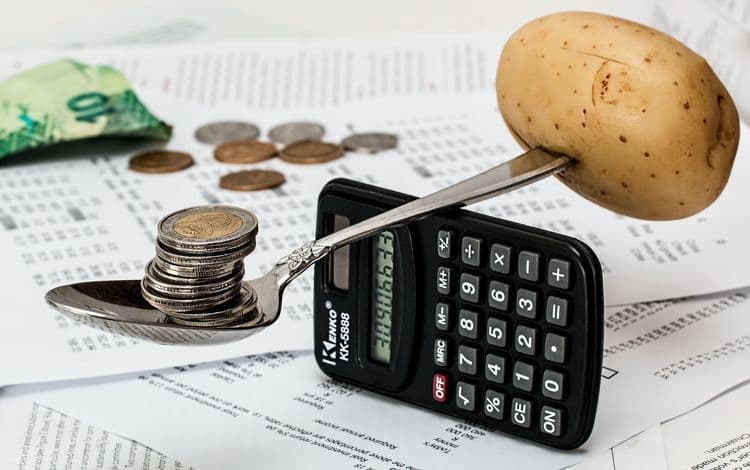It's no secret that starting and successfully sustaining a small business is a difficult endeavor. This is why so many companies fail in their first year out of the gate. There are numerous reasons for the fact that over thirty percent of small businesses shut their doors in their inaugural year. Perhaps though, among the most impacting is the financial difficulty that many encounters as a brand new company. You're obviously not making money in the beginning; you're just getting off the ground. But knowing your breakeven point and what's more, running a breakeven formula can help you more effectively navigate those first-year waters. In this article, we discuss what that breakeven point is and how you arrive at it.
What Exactly Is Break Even Point?
In its simplest terms, a breakeven point is essentially what you need to sell in order to cover the cost of running your business. Prior to attaining that breakeven point, all of your money is going into expenses. In other words, there really is no profit to be had. Once you hit the breakeven point, however, that is when you can finally say you're turning a profit.
As a new business, calculating a breakeven point may just seem an exercise in futility as all it will do is how much in the red you are. Keep in mind, it is still an important thing to figure out as that breakeven point will provide a sort of roadmap, a way for you moving forward to know exactly what you need to do and how much you need to sell in order to become profitable.
Additionally, let's say you decide to go for funding. Having this information on hand could help your case with the lender. Beyond that, the breakeven point could give you insight into the feasibility of a new product launch or even let you know where to start when it comes to pricing products.
Calculating Your Break even Point
The break even point formal is not a difficult one, but it does require you to gather some information and take certain steps toward gaining a better overall understanding of your company's financial picture. You need to take a look at all relevant data to include the potential costs of the products/services you're offering.
Step 1: What are Your Business's Fixed Costs
Your fixed costs are those necessary expenses that allow your business to remain up and running on a daily basis. Even if you fail to sell or things start to take a downturn, these fixed costs will remain the same and thus have to be paid. So, this would not include those expenses associated with the actual products and/or production. Fixed costs might be:
- Rent / mortgage payment
- Utilities associated with the workspace, not with what is required to run the equipment used in production
- Insurances
- Payroll
- Cost of office equipment and technology
Step 2: What are Your Variable Unit Costs
Unlike fixed costs, these are associated with the cost of products and production. You, therefore, have to carefully go through and figure out what every single thing connected to producing your items costs. From research, to design, to market exploration, to testing, leave nothing off this list. This could even involve the expense associated with shipping the materials you need in order to make the goods in question.
If you don't manufacture goods per se, then your variable costs would be things such as shipping and packaging, wholesale costs, warehousing, transportation fees, anything of that nature.
Step 3: Establishing A Unit Selling Price
While the breakeven point is an indicator of how much you need to sell in order to start turning an actual profit, you initially have to have a placeholder price established as this is required to input into the formula. When you do come up with this price remember to keep it realistic. It needs to be what the product would genuinely sell for in the marketplace.
Step 4: Using Break even Point Formula
With these costs—fixed and variable—as well as the established placeholder price, you can now utilize the breakeven point formula.
The break even point formula is as follows:
Break even point a.k.a. units you need to sell = Fixed costs / (Revenue per unit-variable cost of each unit/)
**Here is an example:
**If you are a bookseller in this scenario and your fixed costs are calculated to be 6k. The books themselves once you factor in shipping, wholesale price, storage and the like each cost $5 and so you've established a placeholder price of $13 per item, your break even point formula would thus look like this:
$6,000/($13-$5/)=750 - In order to break even then, you'd need to sell right around 750 books in order to hit your goal.
Keep in mind, this formula is certainly useful, but you should not rest all of your hopes on it. In other words, yes, it is good to have an idea of what sort of sales goals you need to meet. And yes, understanding where your company finally breaks even can help in terms of establishing an overall game plan moving forward. But remember variables do change. Fixed costs can increase. Utility bills can go up for instance. Rent hikes are possible. Not to mention, variable costs frequently do change as well. Materials may become unavailable thereby forcing a substitution, production costs can certainly shift. Sales can slow down. You have to plan for all of this. Know where that breakeven point is, but don't become so narrowly focused that you lose sight of the big picture.
Us at First Union love working with business owners. We want to see your business grow and thrive. Call today to find out how we can help you!
